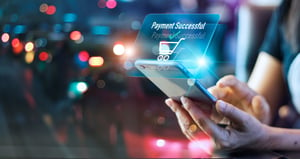 The purpose of bankruptcy is to provide financial relief to debtors who can no longer afford to continue paying their debts. This doesn’t necessarily mean that creditors will get nothing simply because the debtor files for bankruptcy.
The purpose of bankruptcy is to provide financial relief to debtors who can no longer afford to continue paying their debts. This doesn’t necessarily mean that creditors will get nothing simply because the debtor files for bankruptcy.
Property Liquidation in Chapter 7 Bankruptcy
In a chapter 7 bankruptcy, the trustee’s job is to assess the debtor’s property to determine whether there is any property available to “liquidate,” or convert into cash, to pay creditors. In the majority of chapter 7 cases, there will not be any “non-exempt” property available for the trustee to take to pay creditors. This is known as a “No Asset” chapter 7 case. Non-exempt property is property that is not specifically protected from being taken to pay debts by creditors under the law.
What Basic Property Can Be Kept During Bankruptcy in MN?
The law permits debtors to keep basic property needed for living, such as homes, a modest vehicle, clothing, and household goods (aka “exempt property). However, non-exempt property, such as a second home or car, excessive money in a bank account or other non-essential expensive property is subject to being taken to pay down a portion, if not all, of the debtor’s debts in a chapter 7 bankruptcy case.
In these cases, the debtor makes no payments towards their debt, but must turn over any non-exempt property to the trustee, or pay the trustee the value of the property for the right to keep it.
Payments in a Chapter 13 Bankruptcy in MN
In a chapter 13 case, a debtor commits to making monthly payments towards their debts in a 3 to 5 year bankruptcy plan. In most of these cases, most creditors will only receive a portion of the debt owed to them by the debtor. How much money they receive is determined by the type of debt that is owed to them and how much “disposable” income the debtor has available to pay them. In a chapter 13, the debtor must commit all of their disposable income towards their debts each month. Disposable income is defined as being the income leftover after subtracting their necessary monthly expenses from their take home pay.
The difference between a chapter 7 or chapter 13 bankruptcy is that the debtor is allowed to keep all of their non-exempt property in a chapter 13. However, the catch is that the debtor is required to essentially pay the value of the non-exempt property, as this amount is the minimum amount that needs to be paid to the debtor’s general unsecured creditors through their payment plan.
But how much will the creditors actually receive from the proceeds of the liquidated non-exempt property in a chapter 7 or from the payments made in a chapter 13 bankruptcy? The answer is that each creditor will be paid in accordance with the type of debt that is owed to them. Debts are generally categorized as secured, priority unsecured, and non-priority unsecured.
Secured Creditors in Minnesota
Secured creditors are ones that have a security interest, or lien, against the debtor’s property, such as a mortgage company or car lender, which gives them the right to take back the property, if the debtor fails to make payments. Debtors typically have the right to keep to keep the secured property, and continue to make payments, or surrender the property back to the creditor, and discontinue payments.
How Chapter 7 and Chapter 13 Bankruptcy Creditor Payments Are Similar
In either a chapter 7 or 13 bankruptcy, secured creditors are often not paid anything from the trustee because their right to payment is assured by direct payments from the debtor, outside of the bankruptcy and secured by their ability to repossess the property upon the debtor’s failure to do so. However, in chapter 7 cases, the secured creditor may receive payment from the bankruptcy trustee if the debtor is unable to protect the property, such as when the value of a car or home far exceeds the debtor’s ability to exempt it, under law.
In these rare circumstances, the trustee will sell the property, pay of the secured amount owing to the creditor, pay the debtor the exemption amount to which they are entitled, and distribute the remaining amount to the unsecured creditors (while also taking a cut of the proceeds themselves to which they are legally entitled).
Secured Debts in Chapter 13 Bankruptcy
In a chapter 13 bankruptcy, the debtor may opt to pay secured debts either directly to the creditor or from payments made to the trustee in their bankruptcy plan. In many cases, it is beneficial for the creditor to make payments in their plan, as they will typically pay much less interest to the creditor and may even have the option of a “cram down.”
"Cram Down" in Minnesota
In a cram down, which applies mainly to vehicles, and must meet certain requirements (i.e. the debt must be at least 2 and a half years old), the debtor is permitted to pay the actual value of the property, rather than the full amount of debt owed. Notably, in a chapter 13 the debtor must also pay any arrearage (past due debts) on any secured debts, in full, in order to keep the property, which is done through their plan.
Priority Unsecured Creditors in MN
Priority unsecured creditors get paid before general unsecured creditors. Priority debts include those for domestic support (i.e. alimony or child support), taxes and money owed to the government (except for certain older income tax debt that meets certain requirements for being non-priority), administrative expenses (i.e. fees owing to the bankruptcy attorney or trustee), and those arising from a death or personal injury caused by the intoxicated operation of a motor vehicle by the debtor.
All debts not specifically classified as “priority” are considered general unsecured debts which include such debts as medical debt, credit card debt, loans or lines of credit not secured by a lien on property, and student loan debt.
When General Unsecured Creditors Receive Payment in MN
Only after all priority creditors are paid, in full, will the general unsecured creditors receive any payment from the trustee. The general unsecured creditors typically are not paid, in full, and will usually only receive a pro rata share of their debt, meaning they will only receive a share of the payment in proportion to the amount of debt owed to them in relation to the amount of debt owed to the debtor’s other creditors. An exception to this is student loan debt, which is generally non-dischargeable, absent extraordinary circumstances, and is typically paid by the debtor outside of the bankruptcy.
CALL NOW FOR A FREE STRATEGY SESSION FROM A MN BANKRUPTCY LAWYER AT LIFEBACK LAW FIRM
This is a generalized overview of how creditors get paid in bankruptcy and is not intended to be a comprehensive discussion on this topic. To understand how your creditors will receive payment in your particular situation, you should consult an experienced bankruptcy attorney. See us at LifeBackLaw.com!


